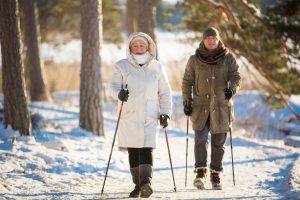
Cold temperatures literally make things harder for your heart.
If you’ve got heart disease, winter can pile on risk like a fresh snowfall. Some experts suggest that winter creates “the perfect storm” for heart problems.
Simply put, cold weather puts a lot more stress on your body. It’s harder to walk around on snow and slush filled streets, and the extra effort may tax you more than you’d realize.
The increased heart rate of carrying yourself from place to place, combined with the natural effect of cold temperature on your circulatory system, can boost the risk of a heart attack.
Cold temperatures can decrease the supply of oxygen-rich blood to the heart even though you need more of it as you’re working harder. Blood vessels constrict, and the heart needs to rev up to try and meet the body’s demand.
People with heart disease will often feel chest pain or discomfort (angina pectoris) in cold temperatures, and it can be alarming. When this happens, it’s best to take a break from whatever you’re doing and sit down.
Especially if you’re performing strenuous activity like shoveling, which also poses a seasonal risk for cardiovascular events.
To give yourself the best chance at getting through a cold winter without a cardiovascular event, there are a few things you can do.
The first is to take your time with the added physical demands. Sit down for a break when shoveling or take your pace down a notch while walking.
Avoid alcohol immediately before or after outdoor activity. If you warm up with a stout or hot toddy, make sure about 30-minutes has passed following the labor!
Be aware of hypothermia. Even if you’re feeling quite warm, don’t remove your jacket when outdoors. In fact, put your hat, scarf, and gloves on before going outside. Hypothermia can sneak up on you, so be sure to dress warmly.
Wearing removable layers is the best way to maintain a comfortable temperature and reduce the risk of hypothermia. Wear warm, breathable layers that can easily be reapplied when the cold sets in.
Being aware of the seasons’ effect on your body can help you stay safe this season. And with all the threats working against you, every bit helps.